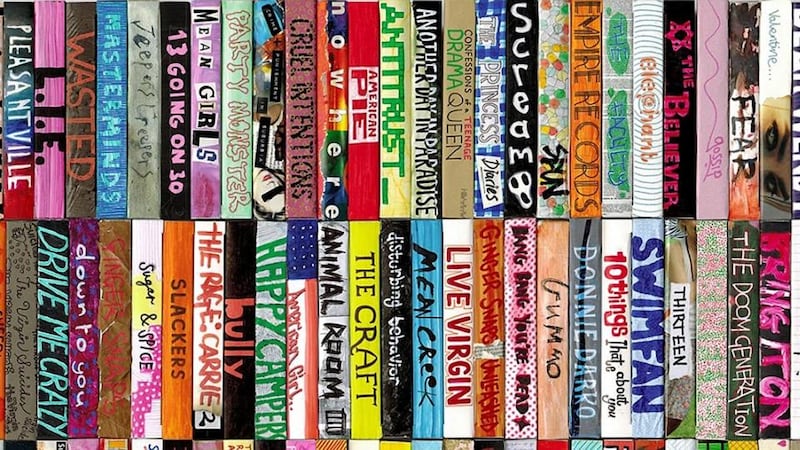The narrative architecture is unmistakeable. New boy/new girl arrives at high school, where they soon learn their way around the complicated social structure comprising jocks, geeks and everything in between. They’re taken in by the cool kids, only to become disillusioned with them. They go to the prom: older, wiser and with Robert Pattinson (or similar) on their arm.
Welcome to Every Teen Movie, a genre determined by a structure that's far more rigid than any of the social cliques that govern the cinematic schoolyards. This fixed formula looms large in Beyond Clueless, a new essay-based documentary from director Charlie Lyne. The film contains clips from more than 200 American teen movies, all seamlessly edited into a sustained riff on the genre: an uber-montage narrated by former teen star Fairuza Balk.
“It took a year with a handful of us working out of my bedroom,” explains Lyne. “By the end we were going a bit stir crazy watching all these teen movies. Going in, I thought: ‘Oh, I love these films. I know all the tropes and trends’. But once I got stuck into 300 of them, I realised there were lots of tropes that I hadn’t spotted before. I had never realised how many teen movies feature love-struck teenagers in a swimming pool after class. That pops up again and again and again.”

Teens forever
There is a considerable body of evidence to suggest that persons aged between 11 and 20 have, in fact, been around for some time. Yet, teenagers, we are told, are an invention of the 1950s. That's not quite true: troubled adolescents were at the centre of a handful of Depression Era hard-luck tales, including Wild Boys of the Road (1933).
“I think a lot of what we see in teen movies is already in place during the 1930s,” says Lyne. “You look back at those films and you find so many of the same tropes we’re still watching today. It has always been a genre that is acutely aware of itself and its rules. So it has always played with those rules. A movie like Scream does so very explicitly. But many seemingly unremarkable teen films are playful in less obvious ways.”
Still, the sudden appearance of the teenager in the middle of the last century would inspire Hollywood to do what it does best: sell, sell, sell. The new demographic was duly coaxed into picture houses and drive-ins with rock'n'roll spin-offs (Rock Around the Clock), beach parties (Gidget), disposable mondo movies, (I Was a Teenage Werewolf), Elvis (King Creole) and depictions of teen angst (every James Dean film).
But the movie-verse is a strange and cyclical place. Hollywood soon found new demographics to chase and the screen teen was left in the far corner of the school canteen.
Coming of age
During the 1960s, coming-of-age stories seemed to, well, come of age, with angsty twentysomethings like The Graduate's Benjamin Braddock taking centre stage. By the 1970s, screen teens were getting old, both figuratively and literally: Harrison Ford was almost 30 when he appeared in American Graffiti; John Travolta was in his 20s when he starred in Carrie and Grease.
The 1980s, however, ushered in a golden age for teen movies. Timing is everything: the baby-boomers, the same folks who flocked to The Wild One and Rebel Without a Cause in their youth, had recently entered the film-making corps. The genre soon found favour with established directors such as Francis Ford Coppola (Rumblefish) and newcomers such as Joel Schumacher, who broke through with St Elmo's Fire (1985) and The Lost Boys (1987).
What's more, the genre soon found a champion in the late John Hughes, who presided over Sixteen Candles, The Breakfast Club, Pretty in Pink, Weird Science and Ferris Bueller's Day Off. Hughes' output did much to codify the genre, although he fails to make a dent in Beyond Clueless.
From the 1990s
"There aren't any 1980s films in our film," admits Lyne. "That's a bit selfish on my part. I wanted the movies of the nineties and noughties because these are the movies that I grew up on. But also I think that's the point where teen movies broaden out. They're no longer ruled by a couple of titan-like figures as with John Hughes in the eighties. Suddenly, there are hundreds of mid-level films with much broader themes."
In this spirit, Beyond Clueless plays home to dozens of obscure or forgotten teen flicks including Bubble Boy, Idle Hands and Slap Her, She's French.
“It’s weird because I think I went in with a very clear idea of what my favourite teen movies were,” says Lyne. “But having watched hundreds and hundreds of them, I started to find the odder ones more interesting and worth revisiting.”
They're young adults now
For all the hats in the air and lucky fumbling on display, there is something elegiac about Beyond Clueless. Teens haven't exactly gone away, but the conventional teen movie has been eclipsed by Young Adult mega-franchises such as Twilight, Hunger Games and Divergent. True, many of these pictures share DNA with older teen movies: hero or heroine arrives at a new school or training ground, they makes enemies, forge unlikely alliances and find a top ranking place in the social order. But it's just not Molly Ringwald.
“That’s one of the reasons I wanted to make our film,” says Lyne. “Teenagers are now so pervasive. Every movie seems to have a teenage lead. But I think the more straightforward teen movie – the kind of movie that’s aimed at teenagers and not mass audiences – will come back. But I’m probably the wrong person to ask. I’m not a teenager anymore.”


















